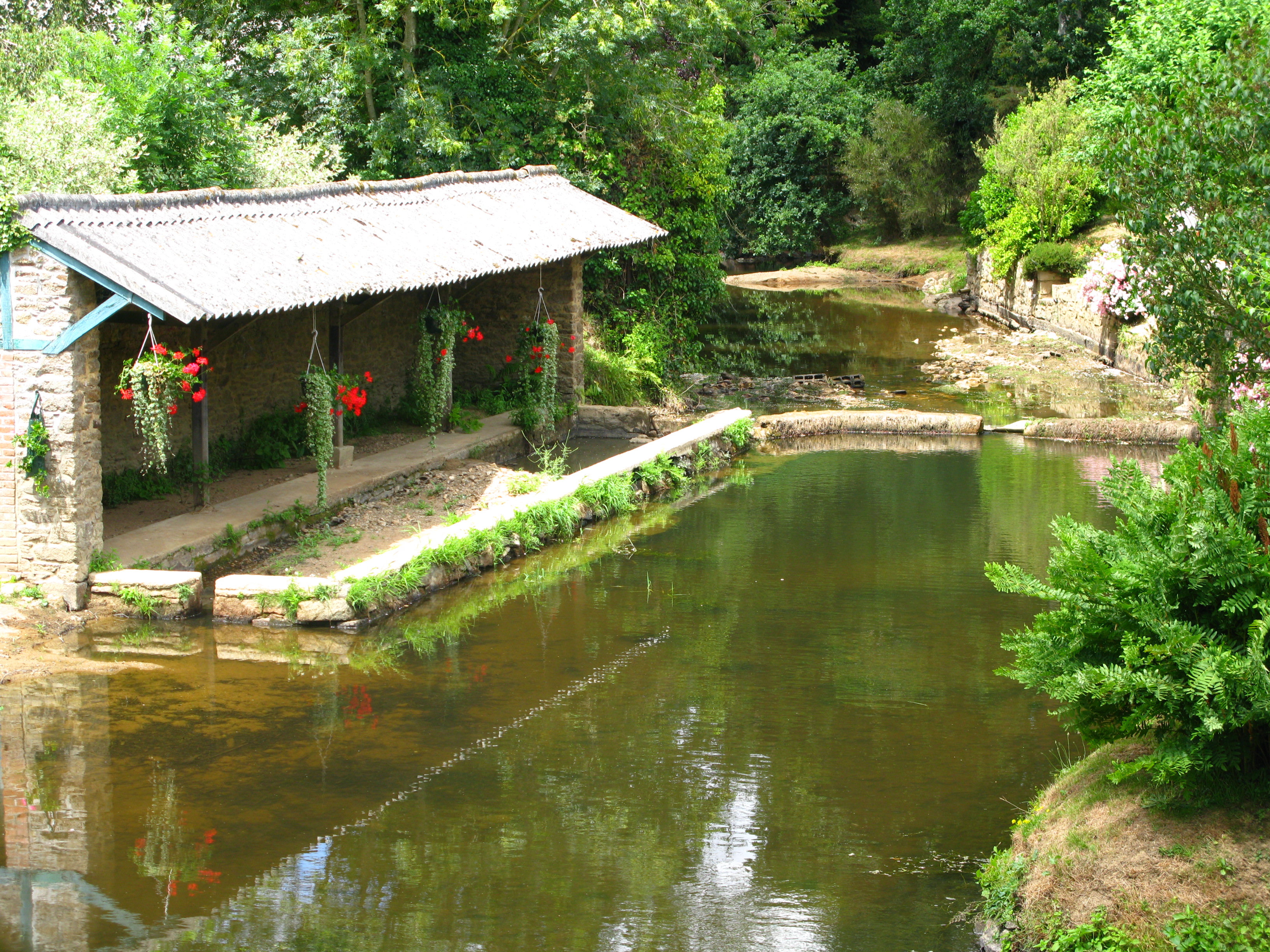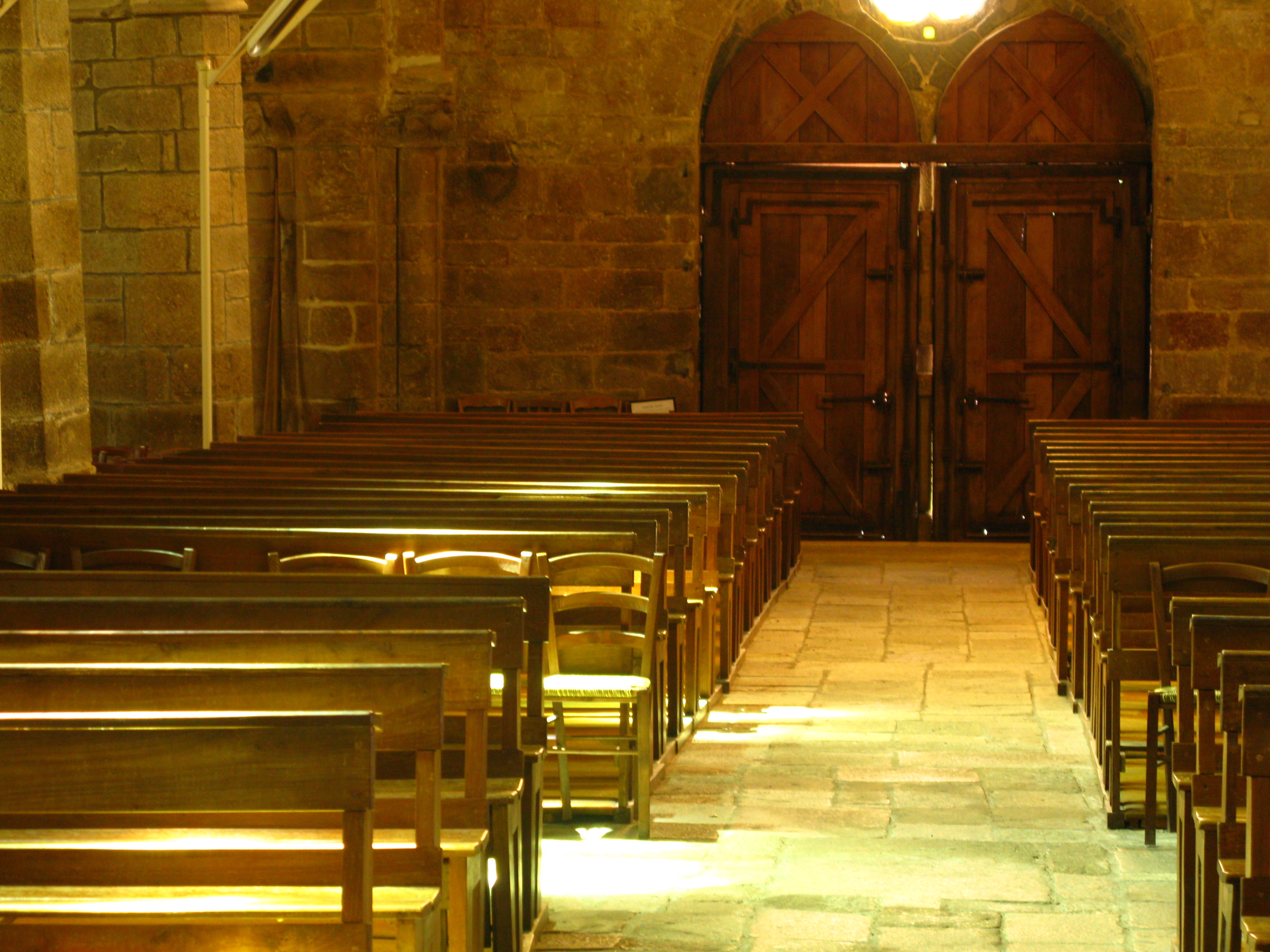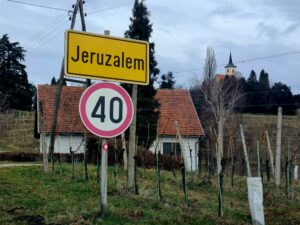In this particular part of France, in Brittany, you’re more likely to pass a bicycle on the road than a car, which somewhat explains the phenomenon that is the Tour de France. It’s incredibly quiet and very, very bucolic.
The towns and villages we drive through are like ageing dowagers; you can still see vestiges of their former beauty but the plethora of a vendre signs on  shuttered windows tells its own story.
shuttered windows tells its own story.
Each village is a rainbow of flowering plants: pinks, blues, purples, reds and yellows. Doors and window frames, once painted bright blues and greens, have faded to a more solicitous shade of weather-beaten glory. Rusty hinges and corroded nails cling solidly to flaking wood. Ivy creeps up the walls, shading window ledges, providing homes for sparrows and starlings. Tall fields of green maize and golden fields of wheat and barley line the narrow country roads. We brake once, as a bushy-tailed fox crosses the road in front of us. He is the only other traffic we meet on our way to La Trinité-Porhoët.
With its thirteenth-century Romanesque church whose floor slopes downwards at an angle of about 10 degrees, La Trinité-Porhoët is just one example of towns and villages that somehow have managed to avoid the clutches of twenty-first-century consumerism. You can still see the lavoire where women would come to do their laundry, beating their clothes to cleanliness with stones, winter and summer alike.

Or Rohan, where the magnificent Abbey of Timadeuc, built in 1841, is now home to some Cistercian monks and quite famous for its cheese. Monday morning mass at the Abbey is concelebrated by 10 priests. Fourteen monks of all ages sit in the stalls, outnumbering the congregation. The granite simplicity and the absence of the usual siren of statues so common in other Roman Catholic churches, give the place a peculiarly blessed feel. The acoustics are wonderful. The monks’ chanting echoes under the stone quadripartite vaulted roof. The semicircular arches make it seem longer than it actually is. I lose myself in the timbre of their song and although my Leaving-Cert French hovers tantalisingly in some far off recess of my mind, I don’t need or want to understand what’s being said. The simplicity of it all is simply beautiful.
About an hour outside Rennes (the closest airport to CM’s smallholding in Landes Ardennes), the area around Coëtlogon is mainly farmland. The place is remarkable for its lack of people. Fields of freshly cut hay, stacked in round bales, testify to an activity that has obviously taken place but where are all the farmworkers? This countryside is like a rural rendition of the Marie Celeste. The only other beings I see are two peacocks, strutting down the road, lord and lady of all that they survey.
If the French do anything well, it’s eating. Lunch in the medieval town of Josselin, home to the Basilique Notre Dame du Roncier, is nothing short of glorious. Although 60 miles from the coast, moules marinieres et frites seem to be the order of the day. I count 108 mussels on my plate and the chips…the chips… I can see now why the French claim ownership of the ubiquitous French fry. For once, I am not driving, so I quite happily enjoy a simple, uncomplicated dry French wine.
Perhaps, a few years ago, France was cheap. No longer. Oh, you can still get a house that needs a bit of work for a fraction of what you’d pay in Ireland, but everything else seems to have moved to level par. €10 for brioche at the market. €16 for a spit-roasted chicken. €1.35 for a litre of petrol. And with the gap between sterling and the euro closing daily, those who have left Britain for Brittany are finding it harder than expected to make ends meet. Would I live here, so far from the coast, in such unforgiving heat? No. But it’s a lovely place to spend some time and recharge the batteries, mainly because there’s little to do and nothing to distract you from doing it. Perhaps GPs the world over should consider prescribing a week in Brittany as a tonic for those of us stressed and stretched beyond belief by the anxiety of daily living. Unplugged, disconnected and free from that pressing need to ‘do’, it’s the perfect cure for a manic mind.









One Response